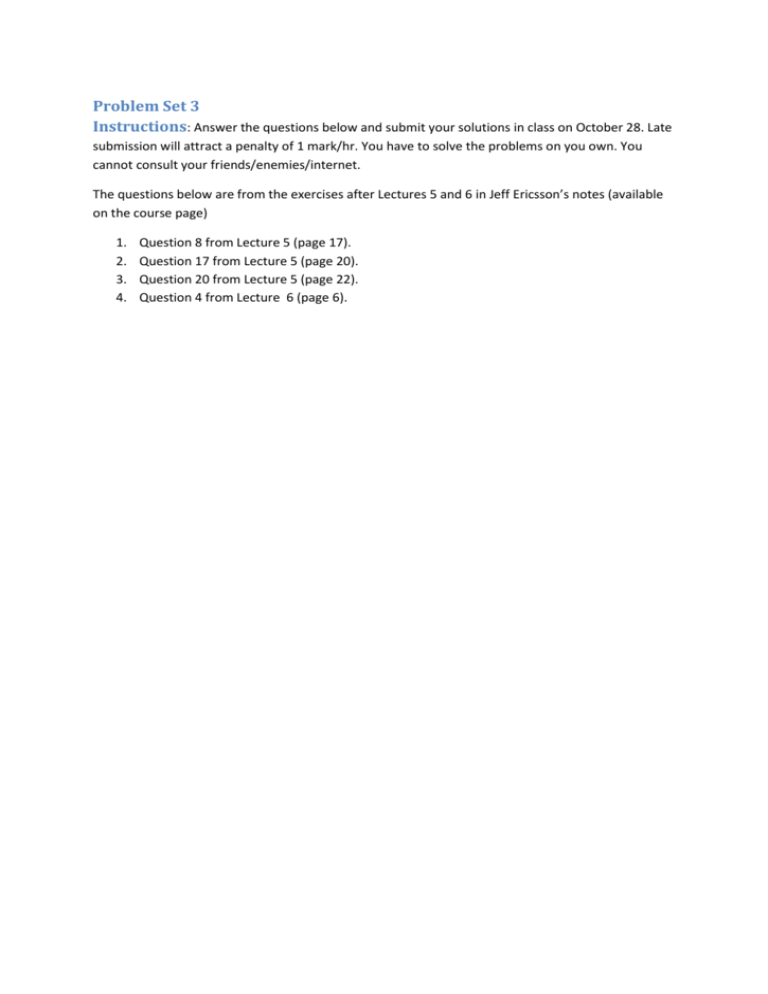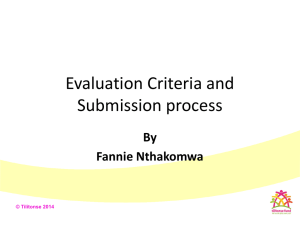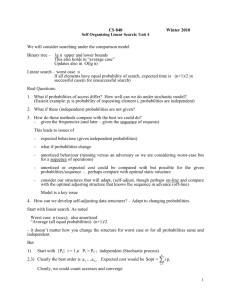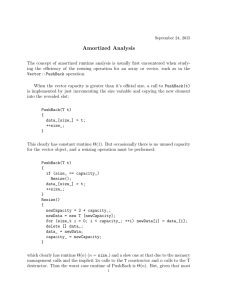One
advertisement

Problem Set 3
Instructions: Answer the questions below and submit your solutions in class on October 28. Late
submission will attract a penalty of 1 mark/hr. You have to solve the problems on you own. You
cannot consult your friends/enemies/internet.
The questions below are from the exercises after Lectures 5 and 6 in Jeff Ericsson’s notes (available
on the course page)
1.
2.
3.
4.
Question 8 from Lecture 5 (page 17).
Question 17 from Lecture 5 (page 20).
Question 20 from Lecture 5 (page 22).
Question 4 from Lecture 6 (page 6).
Problem Set 2
Instructions: Answer the questions below and submit your solutions in class on September 23.
Late submission will attract a penalty of 1 mark/hr. You have to solve the problems on you own. You
cannot consult your friends/enemies/internet.
1. An induced subgraph of a graph G+(V,E) is a graph H=(U,F) such that 𝑈 ⊆ 𝑉, and 𝐹 =
𝐸 ∩ (𝑈 × 𝑈). Given an undirected graph G+(V,E) and an integer k, find the
maximum induced subgraph H of G such that each vertex in H has degree at least k,
or determine that it does not exist. The algorithms should run in linear time.[10]
2. Given two sorted sequences with m,n elements respectively, design and analyse an
efficient divide and conquer algorithm to find the 𝑘 𝑡ℎ element in the merge of the
two sequences. Your algorithm should run in time log(max(𝑚, 𝑛)).[10]
3. You are given n events where each takes one unit of time. Event j will provide a
profit of 𝑔𝑗 dollars (𝑔𝑗 > 0) if started at or before time 𝑡𝑗 , where 𝑡𝑗 is an arbitrary
real number. (Note: If event j is not started by 𝑡𝑗 then there is no benefit in
scheduling it at all. All events can start as early as time 0.) Given the most efficient
algorithm you can to find a schedule that maximizes the profit.[20]
4. Consider the following problem. The input is a collection 𝐴 = {𝑎1 , 𝑎2 , … , 𝑎𝑛 } of n
points on the real line. The problem is to find a minimum cardinality collection S of
unit intervals that cover every point in A. [10]
Problem Set 1
Instructions: Answer the questions below and submit your solutions in class on August 19. Late
submission will attract a penalty of 1 mark/hr. You have to solve the problems on you own. You
cannot consult your friends/enemies/internet.
1. [10 marks] Is every AVL tree a red-black tree? Prove or disprove you answer.
2. [10 marks] Consider a binary heap of size n , the root storing the smallest element.
We know that the cost of insertion of an element in the heap is O( log n) and the cost
of deleting the smallest element is also O( log n). Suggest a valid potential function
so that the amortized cost of insertion is O( log n) whereas amortized cost of
deleting the smallest element is O( 1).
3. [20 marks] Problem 17-3 from Cormen, Leiserson. Rivest, Stein (page 473 in 3rd ed,
427 in 2nd ed). Assume α=2/3.Do all 5 parts.











